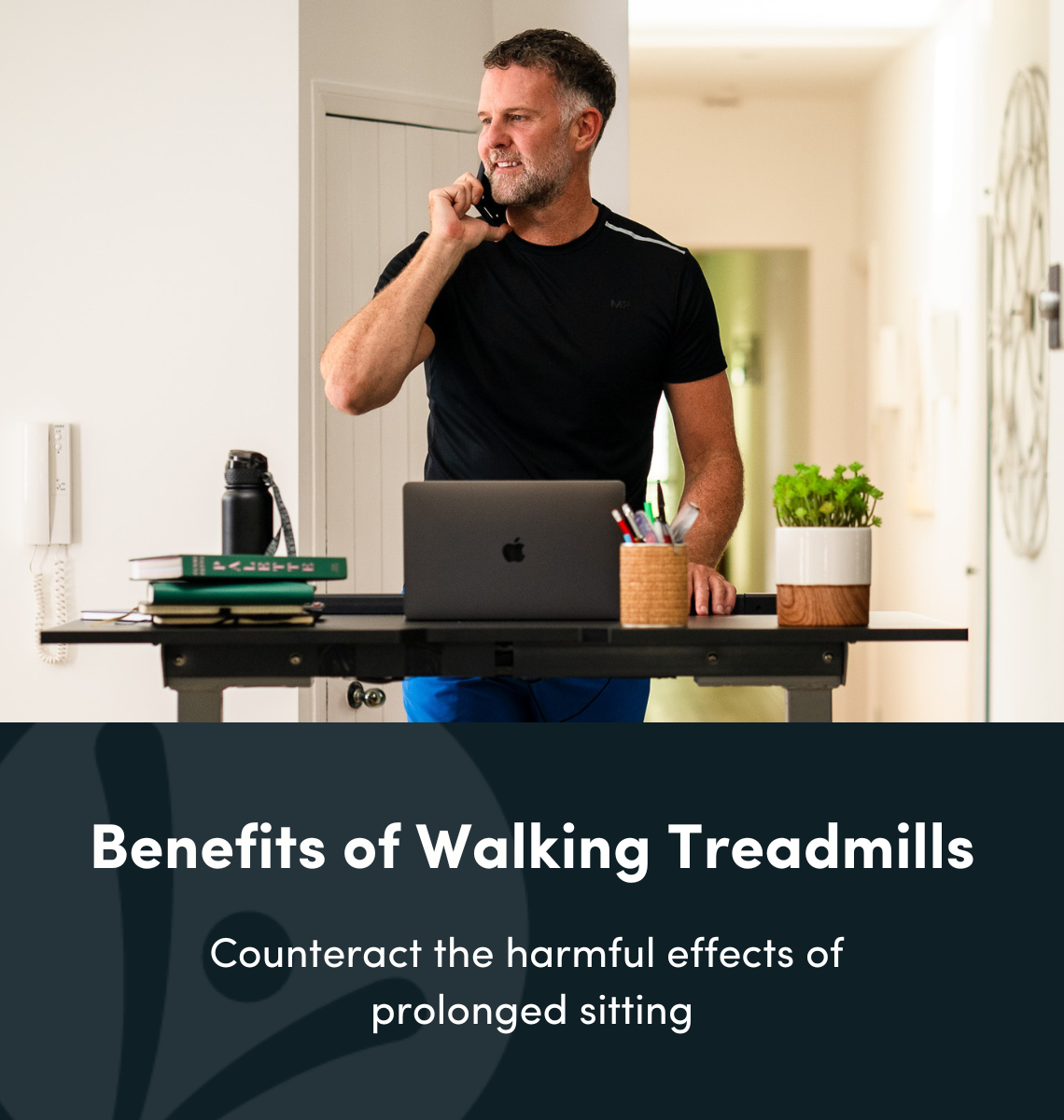Reduces the risk of and helps manage type 2 diabetes
Individuals living with type 2 diabetes have too much glucose in their blood, either because their body doesn’t produce enough insulin to process it, or because their body doesn’t use insulin properly. Either way, exercise can help reduce blood glucose levels and also help people with type 2 diabetes avoid long-term complications.
Increases productivity
Research conducted by the University of Minnesota (UMN) and published in the journal Obesity analyzed the effects of walking on a treadmill throughout the workday. They concluded that the work performance of people who used a treadmill desk for a year didn't decline after a very brief, initial adjustment to the change. In fact, the study found that both overall employee productivity and health improved. Stating that work quality, mental performance and time management all improved on days when employees exercised.
Promotes a healthy body weight
Walking, like other forms of exercise, burns calories. Albeit not as many calories as running or biking burns, but walking still requires energy and therefore provides a calorie burn. For weight loss, increasing your intensity level, increasing incline level or walking for longer duration's will burn more calories. However, when using a walking workstation for the first time, you'll want to start out slow and gradually increase your speed and walking duration over a couple weeks time.
Lowers blood pressure
Like other forms of exercise, walking helps increase blood flow which in return decreases blood pressure. According to the American College of Sports Medicine, people with high blood pressure (hypertension) have lower blood pressure readings for up to 22 hours following a single walking session. For individuals that incorporate walking into their daily schedule, they may see decreases as high as 5 to 10 mmHg in both systolic and diastolic blood pressure readings.
Helps maintain strong bones
Weight-bearing exercises where you are working against gravity while staying upright are one of the best ways to build up and maintain bone density. These can be either high-impact or low-impact exercises. Examples of high-impact weight-bearing exercises include: dancing, jogging, running, jumping rope, etc.; and examples of low-impact weight-bearing exercises include: walking, hiking, using an elliptical or stair stepper machine, low-impact aerobics, etc..


 (4.7/5)
(4.7/5)
